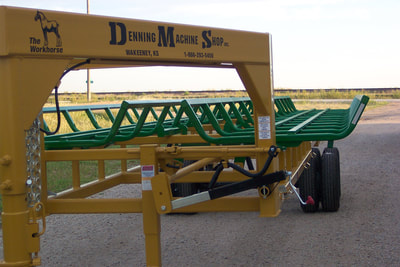
Are you tired of wasting time and fuel every time you haul hay across uneven fields or dusty terrain? You’re not alone. As someone who works hands-on with trailers, driveline parts, and custom fabrication for agriculture and industrial sectors, I’ve seen how switching to an inline bale trailer makes a big difference—especially for small to mid-sized operations. If you’re still using traditional side-by-side wagons or older hauling setups, this read might just be the eye-opener your business needs.
Let’s dig into why it matters—and how it adds up in real-world numbers.
Why Straight-Line Hauling Beats the Old Way
Here’s the hard truth: traditional bale hauling setups cost you time, fuel, and money. Think of all the tight turns, overlapping passes, and the back-and-forth movements you make in the field. Now picture driving an inline bale trailer—where bales sit in a single-file line, reducing width drag and allowing smoother, faster travel through the field.
Here’s how inline bale trailers deliver results:
- Fewer Trips: Haul more bales per load, reducing round trips to the barn or storage.
- Better Aerodynamics: Less resistance means better fuel economy on highways and fields.
- Smoother Handling: Inline design improves stability, especially on hills and muddy terrain.
You’re not just saving time—you’re cutting down your fuel costs significantly.
Field Conditions Matter: Don’t Let the Terrain Beat Your Bottom Line
Mud, loose dirt, hills, and rutted pastures can make hauling a nightmare. With wide or uneven trailers, it’s easy to tip, sink, or waste precious fuel just trying to stay on course. That’s where inline trailers shine.
- On muddy or loose ground, the narrow track keeps weight evenly distributed and reduces resistance.
- On hilly terrain, the balanced design of inline trailers reduces roll risk and engine strain.
- In dry, dusty conditions, smoother turns and less skidding save both your trailer and your tractor from wear and tear.
Real-world feedback from small farms shows up to 20% less engine strain when switching from dual-wagon setups to inline trailers.
Fuel Use Comparison: Inline vs. Traditional Setups
Here’s a practical example based on average numbers from the University of Nebraska Extension:
| Setup Type | Bales Per Trip | Average Fuel Use Per Load | Estimated Fuel Per Season* |
| Traditional Dual Wagon | 10 | 1.6 gallons | 240 gallons |
| Inline Bale Trailer | 14 | 1.2 gallons | 180 gallons |
*Assuming 150 trips per hay season
You could be saving over 60 gallons of diesel fuel each season. Multiply that by today’s fuel prices—and you’ve got one serious reason to rethink your equipment setup.
Is an Inline Trailer Worth the Investment for Small Farms?
If you’re running a smaller outfit, it’s natural to wonder if upgrading is worth the upfront cost. Let’s break it down.
| Criteria | Traditional Wagon | Inline Bale Trailer |
| Initial Cost | Lower | Moderate |
| Fuel Efficiency | Lower | Higher |
| Field Time | Longer | Shorter |
| Maneuverability | Average | Superior |
| Maintenance | Moderate | Lower over time |
| Lifespan with Fabricated Parts | 5-7 years | 8-10 years |
Verdict: Yes, if you want fewer repairs, more efficient loads, and faster days in the field, the investment pays off—especially when you pair your trailer with properly fabricated components like shear-brake mounts, high-durability axles, and custom-welded frame supports.
What to Look for When Choosing or Customizing Your Inline Trailer
Before you go out and buy just any trailer, make sure it’s built right. As experts in welding, machining, and parts manufacturing, they’ve worked with farmers and ag dealers to build trailers that last.
Checklist for a high-efficiency setup:
- Reinforced welds for heavy field use
- Machine-pressed hubs and axles to minimize breakdowns
- Brake systems adapted for hillside handling
- Custom-fit driveline components for your specific terrain
When you get it built right the first time, you save thousands over the years—both in maintenance and lost time.
Still on the Fence? Ask Yourself This
- Do you spend more than 10 hours per week hauling hay?
- Are your fuel costs rising every season?
- Do you operate on uneven or soft ground?
- Are repairs and downtime killing your productivity?
If you said yes to even two of those, an inline round bale trailer could be one of the smartest moves you make this season.
Final Thoughts: Get Ahead of the Field
Let’s face it. Time is money—and fuel is money, too. When you add the savings in fuel, field hours, and wear-and-tear, switching to an inline bale trailer is more than an upgrade—it’s an operational strategy.
Professionals specialize in helping farms and businesses like yours with custom parts, welding, machining, and trailer component builds that fit your equipment like a glove. Whether you’re upgrading or need a tailor-made solution, they’ve got the tools and expertise to help you haul smarter, not harder.
Want to reduce field time and fuel costs this season? Let’s build something that actually works for your farm. Reach out today—they will take it from there.